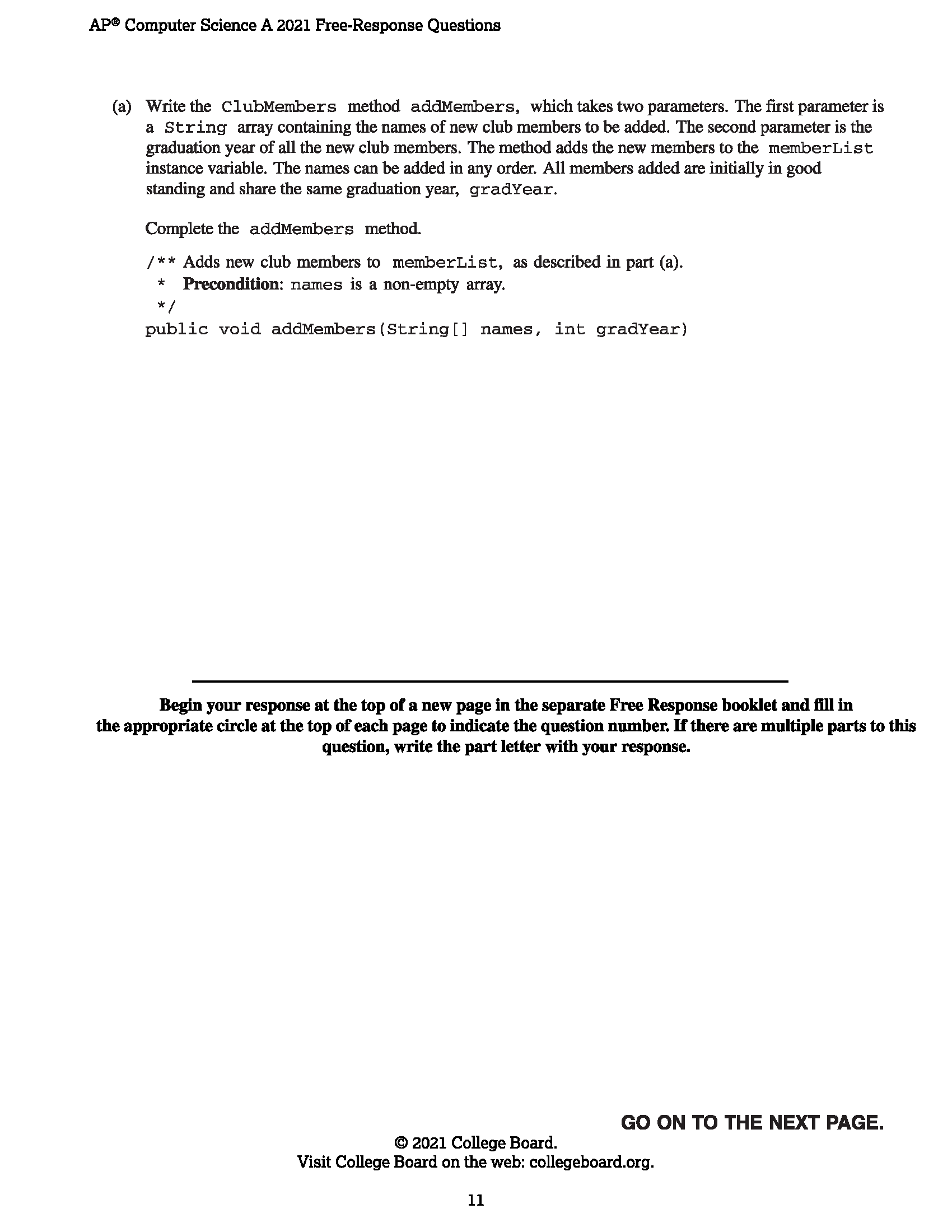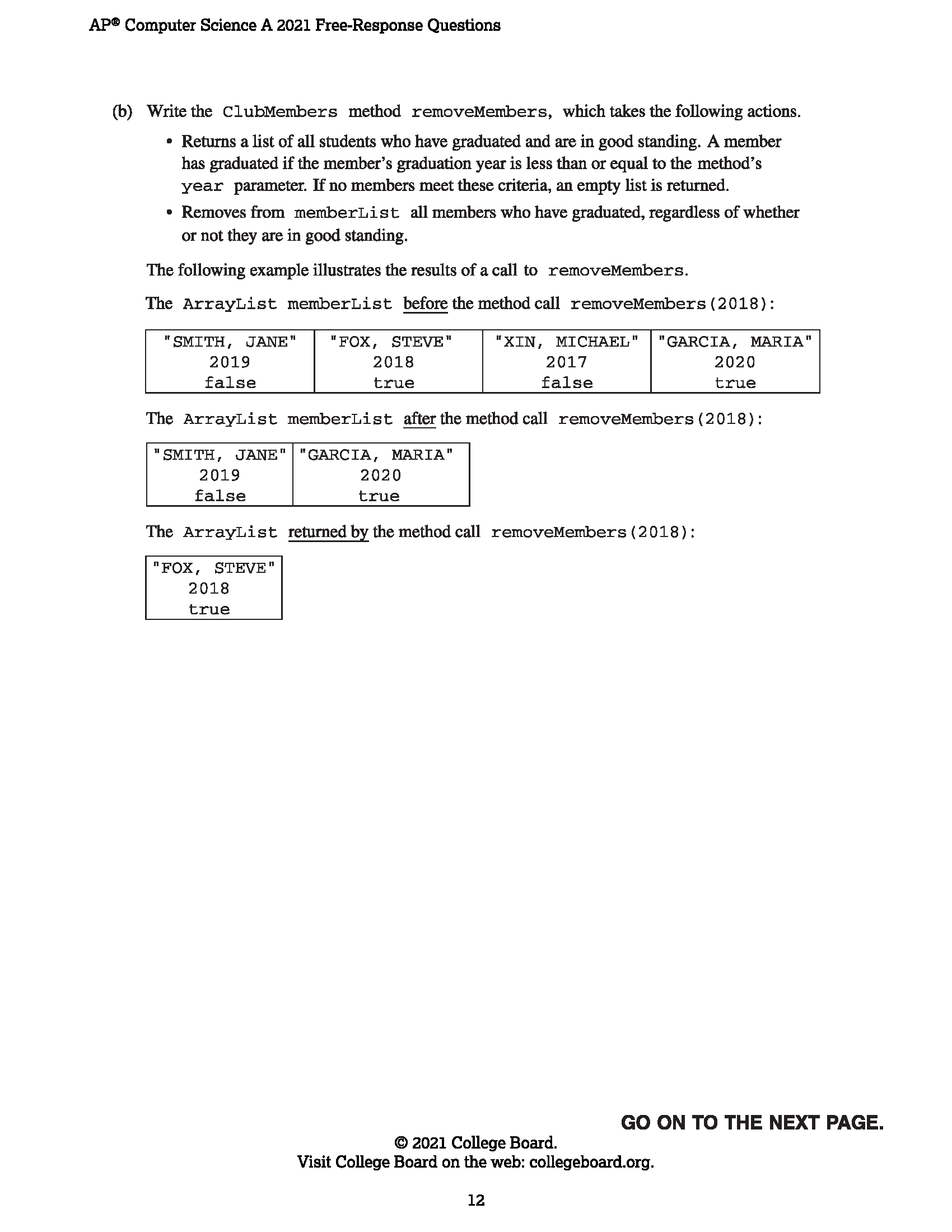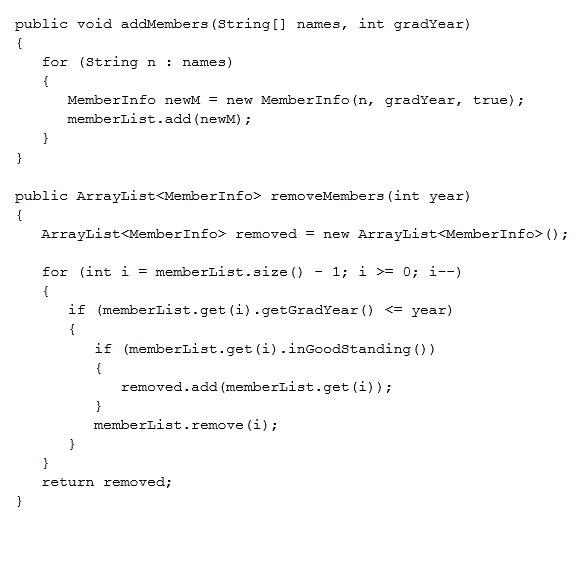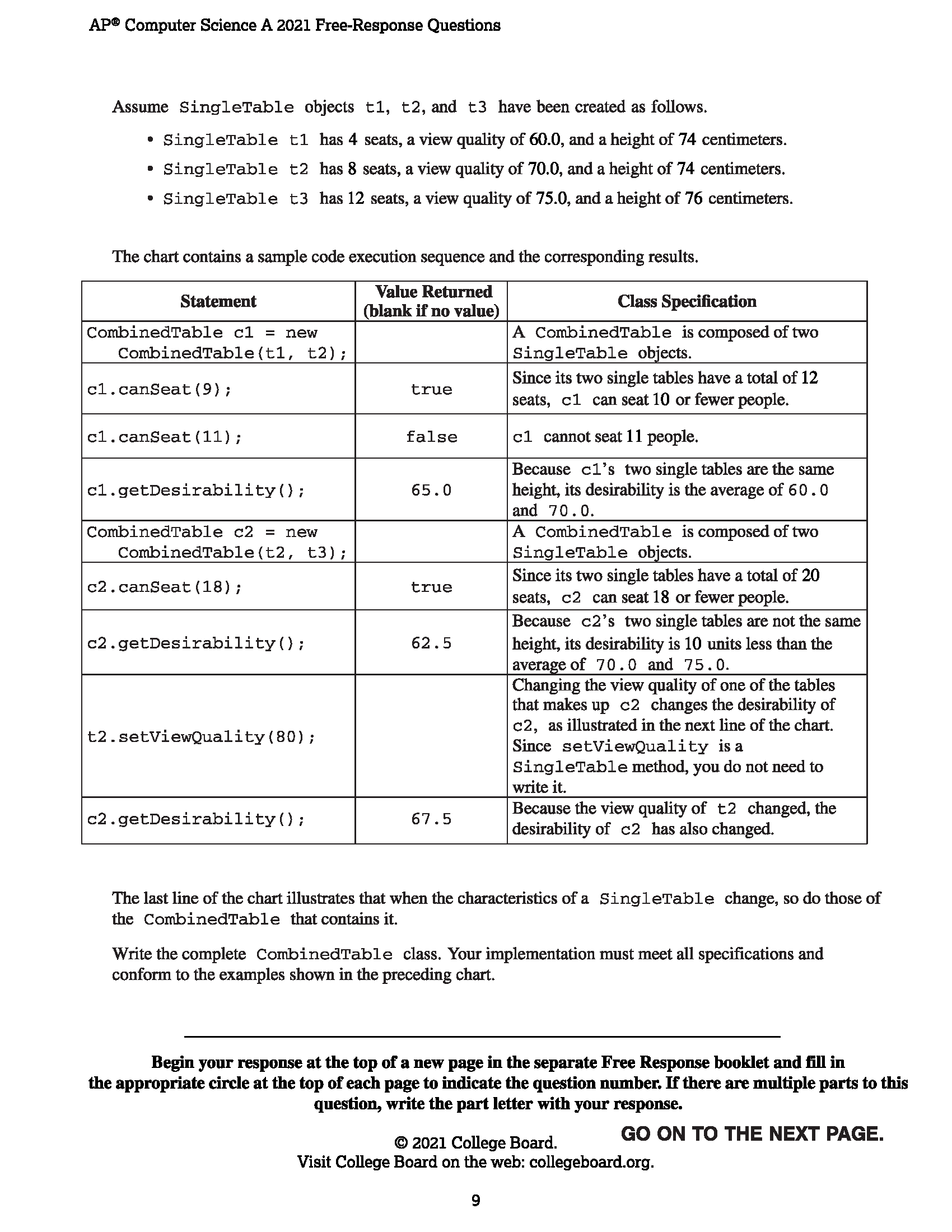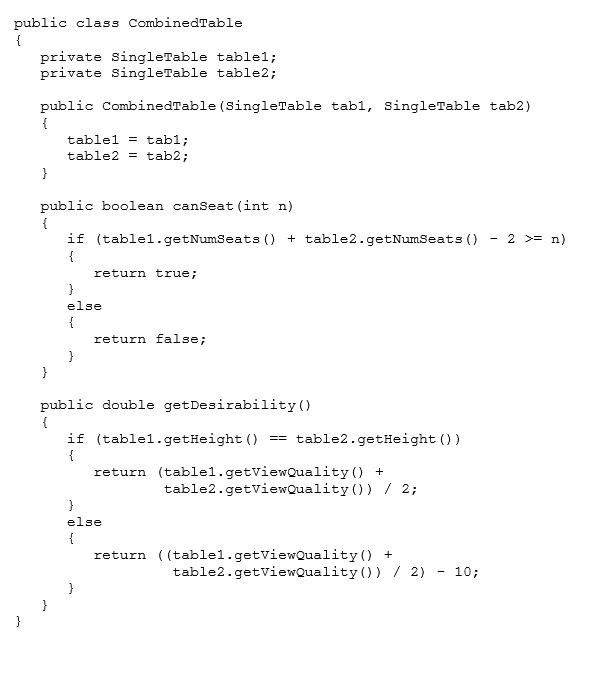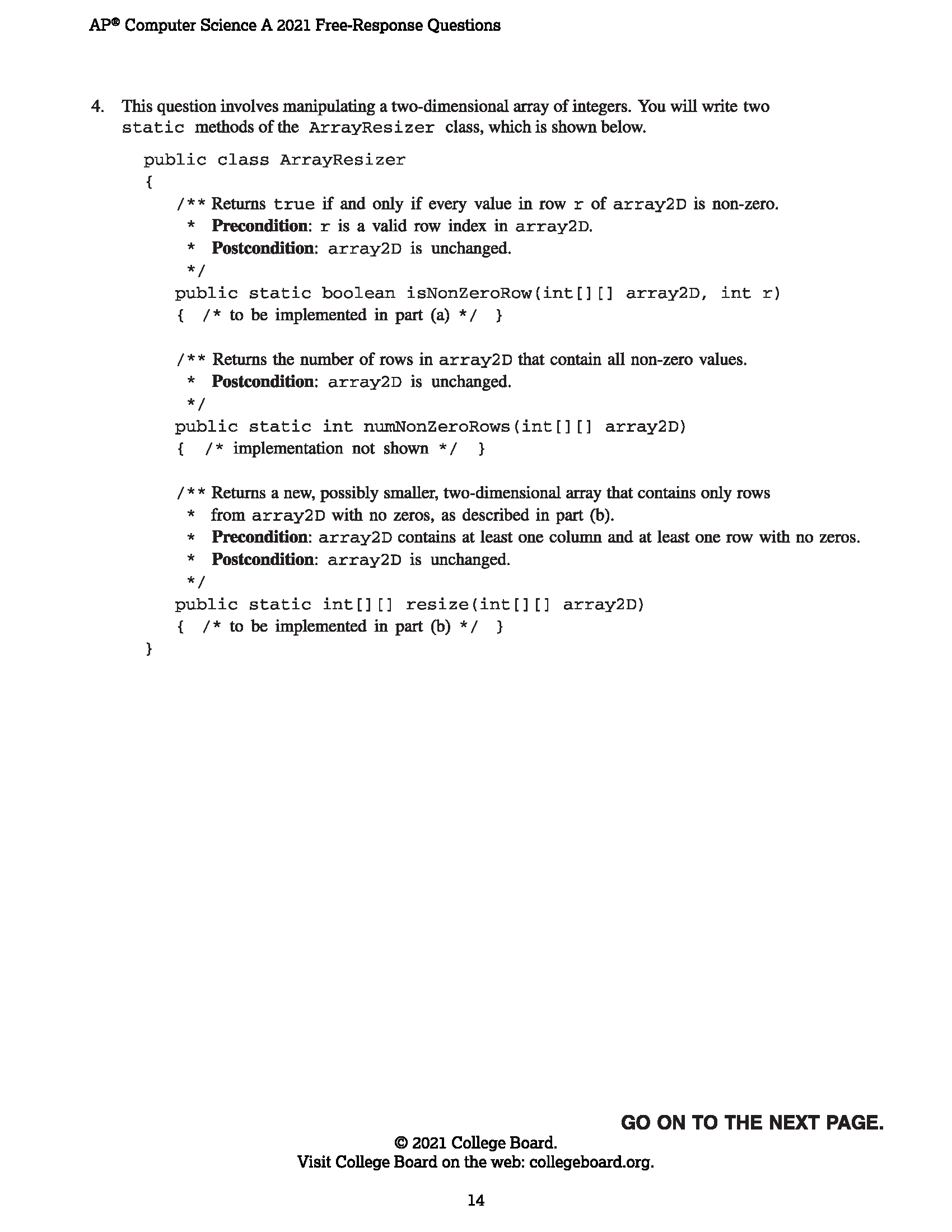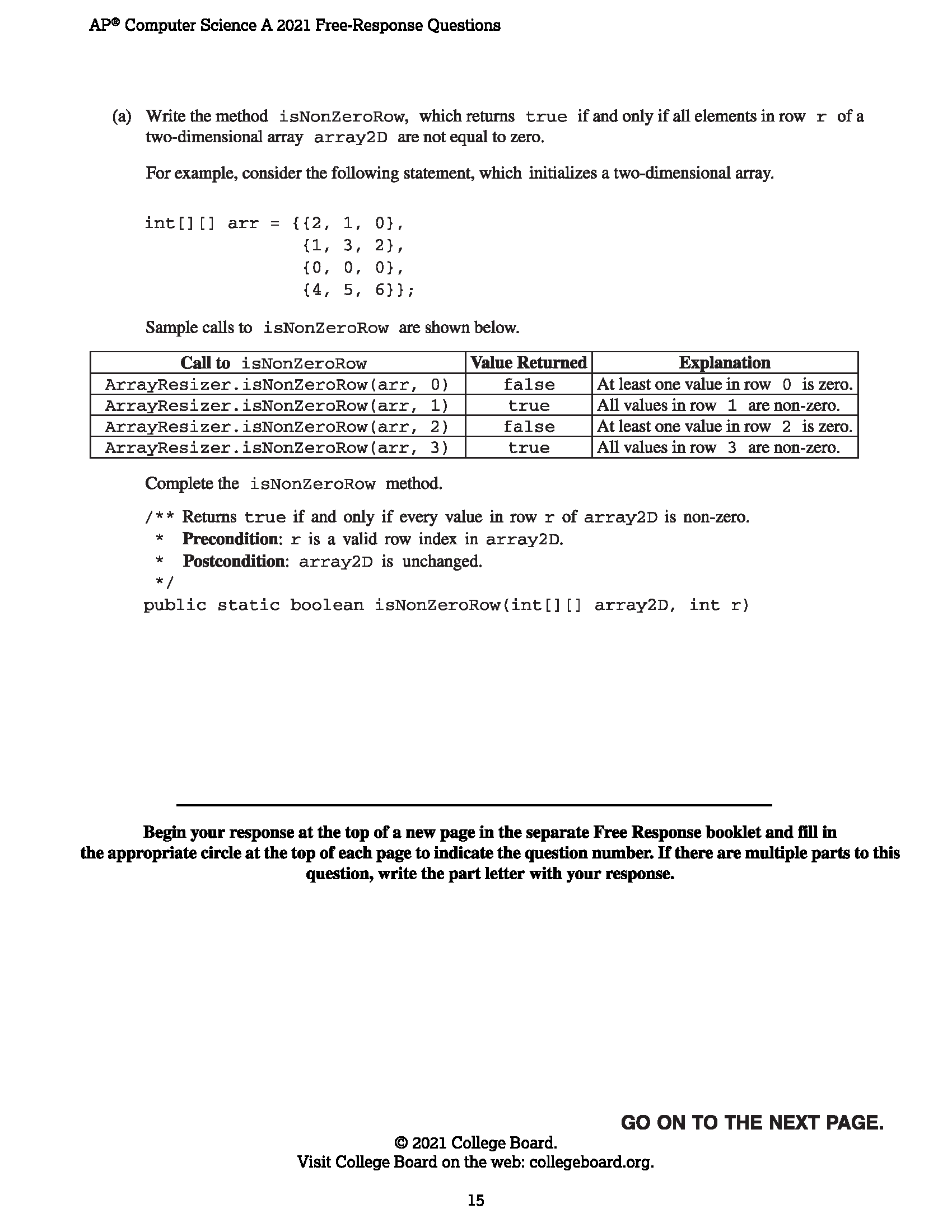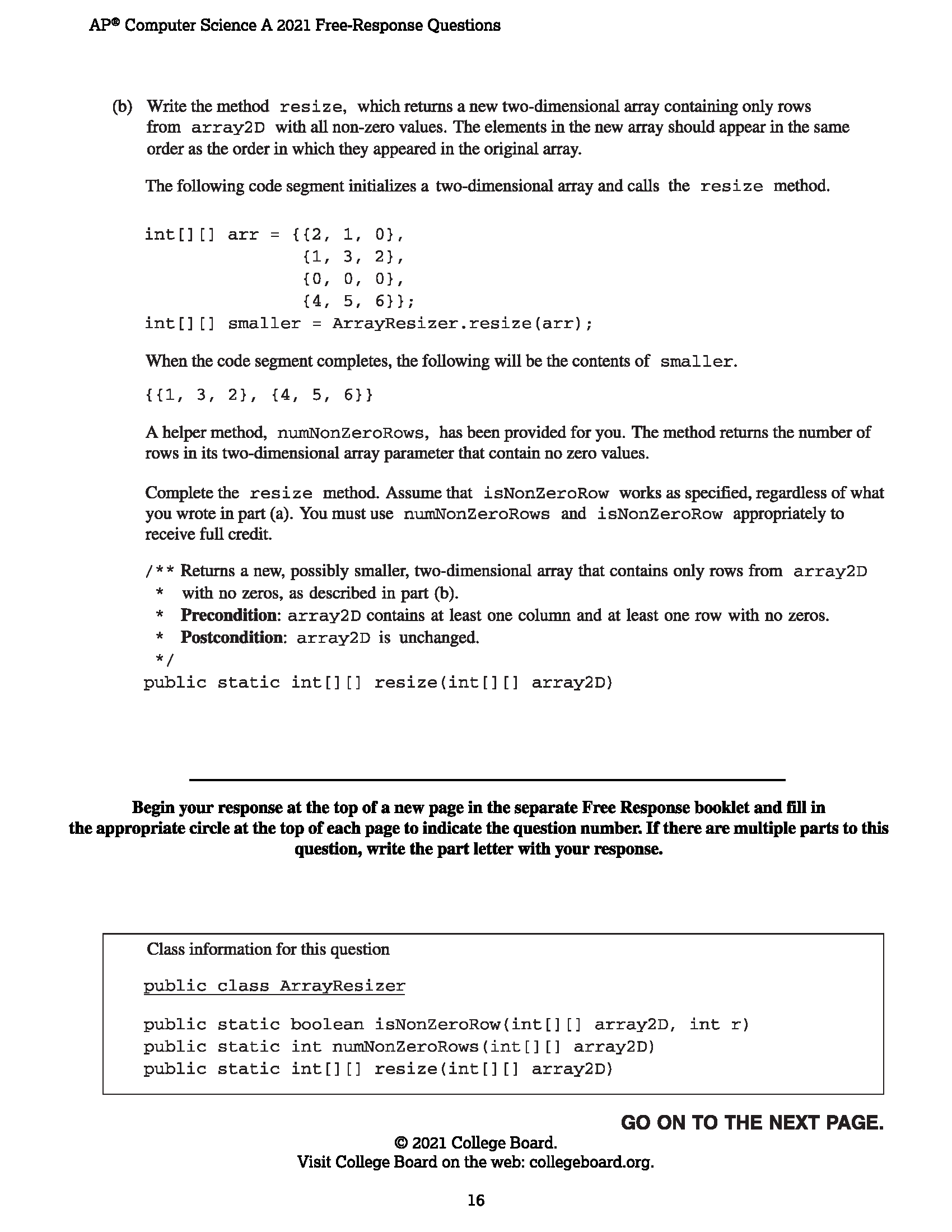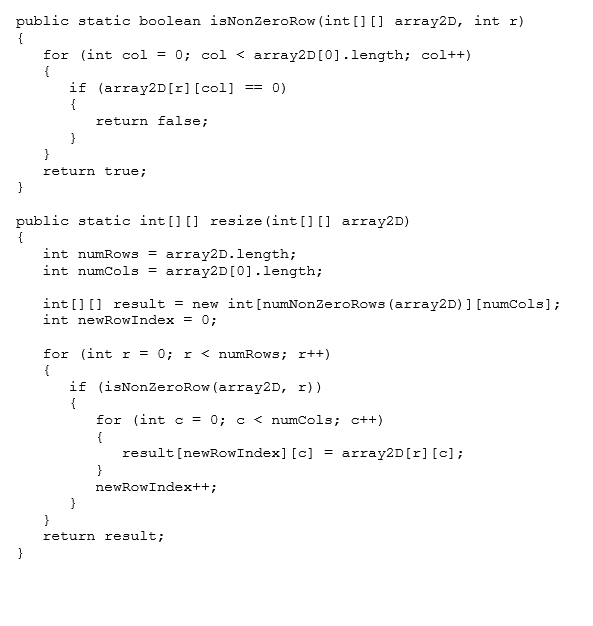AP-TIP Indiana Virtual Fall Conference
November 8, 2023
8:00am - 4:00pm EST
Red = key understandings & official course documents |
Green = important for newer AP teachers |
Blue = activities for workshop participants |
Orange = personal perspectives by workshop leader |
8:00am : Welcome
8:00 - 8:30am : Presentation : Access to today's resources [connecting and preparing for workshop]
Setup : Please do the following as preparation for the day.
-
Bookmark links for the Day (recommend that each link has its own tab in your browser):
-
-
-
MS Teams Link (in case we get disconnected)
-
-
-
CodingBat.com : live-practice minimalist FRQ problems (some aligned to AP CSA)
-
-
Scored FRQ Forms : actual student scoring that may be useful for a Mock Exam...may be used for Afternoon Session
-
Find in Google Drive Folder : ...used for Afternoon Session
-
Websites and links for the day
-
Scoring Forms : Practice Scoring Example for Students A, B, and C on the 2022 Free Response Questions 1 - 4 (i.e. FRQ #1A)
-
AP CSA Java Quick Reference sheet : given to students on Exam Day. All FRQ questions can be answered using this sub-set of the standard Java methods and class libraries. This sheet helps limit the 10,000+ classes and methods that students *might* have access to or find on the internet. Students MUST be familiar with this sheet.
-
Endorsed Provider Feedback form : to share our common experience using/reviewing EP in the classroom
-
Login : AP Classroom ...used for Morning Session
Review Structure of the AP CSA Exam (redesign in 2020): 8May, 2024 : noon-3pm local
-
Multiple Choice : 40 questions (each 1.25% weight, 0-1 pt) : 90 minutes : 50% of AP Score : Practices 1,2,4, and 5
-
Focus for Morning Session
-
MC questions on Exams are rarely released as they are used to correlate year-by-year scores for validation...John will demonstrate AP Classroom Quiz design and filter to generate about 110 MC questions :
-
Assessment Purpose : AP Exam (released questions from all AP Exams),
-
Exam Alignment : High (removes questions no longer aligned to current CED)
-
Question Type : MCQ (removed free response questions)
-
Free Response : 4 questions (each 12.5% weight, 0-9 pts) : 90 minutes : 50% of AP Score : Practice 3
-
Q1 : Methods and Control Structures—Students will be asked to write program code to create objects of a class and call methods, and satisfy method specifications using expressions, conditional statements, and iterative statements.
-
Focus for Afternoon Session : Q2 : Class Design — Students will be asked to write program code to define a new type by creating a class and satisfy method specifications using expressions, conditional statements, and iterative statements.
-
Focus for Afternoon Session : Q3 : Array/ArrayList — Students will be asked to write program code to satisfy method specifications using expressions, conditional statements, and iterative statements and create, traverse, and manipulate elements in 1D array or ArrayList objects.
-
Focus for Afternoon Session : Q4 : 2D Array — Students will be asked to write program code to satisfy method specifications using expressions, conditional statements, and iterative statements and create, traverse, and manipulate elements in 2D array objects.
8:30 - 10:00am : AP Classroom : Focus on Multiple Choice Questions (MC)
Demonstration : Organization of AP Classroom (& new quirks : Two-level navigation...see Announcement Area (?) for more complete info)
-
Course Guide : Multi-Year
-
Note: same as last year's (i.e. 2022) "Course Resources" menu
-
Teaching the CED Unit by Unit : Topic Questions & AP Daily Videos
-
Practice Exams : 2020, 2015, 2014
-
Review : 2023 AP Exam On-Demand Video Review (8 practice sessions with Tim Gallagher & Rob Schultz) : NOTE: Check Session 3 FRQ2 video: can you see the Modeling of Active Reading!
-
Question Bank : Multi-Year
-
Create Quiz from 646 questions with suggestions for Quiz Naming conventions:
-
CamelCase
-
DesignYear : DateUsed : Purpose : QuestionType : TimeFrame
-
Filtering
-
use of Create Labels may help
-
Resources & Assignments
-
Assigned Resources : keeping track of progress during school year : Current Year Only
-
All Resources : Progress Checks, My Quizzes, Practice Exams, Videos : Multi-Year
-
same as previous "Course Resources" menu
-
NEW: besides Quiz Names, you can Create Labels for Resources to organize Assignments into groups/categories
-
Shared Quizzes : "Shared with Me" and "Shared by Me" demo of AP CSP : Multi-Year
-
Demonstraton under My Quizzes tab : 2021:Aug:1stDay/Week Quiz: MC(7):15min
-
Scoring Reports : Multi-Year : All Assignments : Progress Checks : My Quizzes : Practice Exams : Videos
-
Formative Feedback can use Student View : Multi-Year
-
"My Quizzes" from 2022-23 and earlier
-
Progress Checks from 2022-23 and ealier
-
NEW: Content & Skills Performance : demo of Example District (OR WATCH Announcement Area VIDEO) : Multi-Year
10:00-10:15am : Break
10:15 - 11:00am : AP Classroom : Practice with MC and Feedback
-
Review and assign one or more Topic Questions that align with a Lesson you have already taught.
-
Classroom Ideas: bell-ringer, exit ticket, quick-check
-
Search through Question Bank for additional Questions aligned to the same (or similar) Lesson.
-
Create a Quiz with at least 5 questions and then save the quiz as "DesignYear : DateUsed : Topic : QuestionType : TimeFrame." Example : 2023-24:NovWk2:ForLoops:5MCQ:15min
-
Assign the Quiz to your students either for In-class work or Homework.
-
Score only for Completion...you may set a minimum criteria (Example: 75% answers correct) for full credit or student may re-take quiz at a later date
-
Upon return to your students, Review and familiarize yourself with the Scoring Reports options
-
Optional : can you share your Quiz with other Teachers?
11:00 - 12:00pm : Endorsed Providers : Discussion and Integration with AP Classroom
-
Find list of Endorsed Providers (EP) at APCentral
-
Code.org
-
CodeHS
-
CSAwesome
-
Hello World
-
NJCTL
-
Project STEM
-
Tynker
-
TEALS from Microsoft
-
PLTW
-
Codio or UTeach
-
Other (please add in the Comment Box later in Survey which Endorsed Provider)
-
Feedback from Participants via shared GoogleDoc with focus on answering:
-
Does the EP currently address all your teacher and/or student needs?
-
What do you like and/or dislike of the EP?
-
Can (or Does) AP Classroom mesh or map well with the EP's syllabus?
-
What additional support do you want or need using EP?
noon - 1:00pm : Lunch
1:00 - 2:00pm : Breakout Session for FRQ3 : CodingBat and 1D arrays
Quick Insights into all the Free Response Questions (FRQ) [learning to score the Samples]
Java Quick Reference Sheet : Know your limits and guide your students via KISS
-
Besides learning the syntax of the language, Java comes with nearly ten thousand Classes that are available for professionals to use.
-
To minimize teacher and student requirements for the Written Exam, the College Board has determined the following 6 Classes and 26 fields or methods will be needed by students to answer FRQ's.
-
Students (and teachers) *may* use any of the 10,000+ Classes in Java but also risk a mis-score if a Reader is not familiar with the nuances of esoteric coding...how many coders know how to use Java's Swing library?.

2021 Exam and Rubrics : Introduction to Scoring : [Why 2021? Ans: it's on AP Classroom, current, not too recent, and more challenging than 2022 Exam]
-
Student training for Question 1 Method & Control Structures via the 3 Samples (1A, 1B, and 1C)
Question: Why does John have students Score before writing their own solutions to Exam FRQ's?
Answer: Students who analyze and score other student responses--who are carefully selected by CR--both prepares and trains students to write their own responses on the Exam to similar questions.
-
You will need (for your students):
NOTE: we may only have time to complete Student Sample 1A during the workshop.
-
-
-
-
Printout : Understanding Canonical Solution vs your/teacher solution (i..e as you taught it?)
-
Printout : Scoring Criteria as applied to Canonical Solution (vs your/teacher solution?)
-
Project : Sample 1A
-
Score Sample 1A
-
-
Discussion/clarification on Sample 1A versus CR explanation
-
Project : Sample 1B
-
Score Sample 1B
-
-
Discussion/clarification on Sample 1B versus CR explanation
-
Project : Sample 1C
-
Score Sample1C
-
-
Discussion/clarification on Sample 1C versus CR explanation
-
Printout : General Scoring Penalty/noPenalty sheet (lowest priority and may not be needed initially)
-
Hint: You may also assign 2021 FRQs in AP Classroom to have students attempt their own answers in-class after practice scoring...see if they "remember" the good solutions and avoid poor solutions.
-
Don't forget, the CED also has a sample Exam for 15 MCQs and FRQ 1 and 3 with scoring guideline.
-
2021 Scoring : Exam Questions and Scoring Information from APCentral
-
Scoring Guidelines (i.e. Rubrics)
-
General Penalty/noPenelty Points sheet
-
Question-specific :
-
Canonical Solution and point assignments
-
Scoring Criteria & Decision Rules (3-way match : question purpose, point score, and student response that may or may not earn point)
-
may include Question-specific penalty(s)
-
Chief Reader Report
-
Overall Exam Statistics (2022 had 413 Readers for 74,676 students with a global mean of 3.12 out of 5 AP CSA score)
-
Question-specific
-
Statistics : mean score out of 9 (see below)
-
Purpose of Question : Skills demonstrated by students
-
Common understandings & mistakes (misconceptions/knowledge gaps) noted on each part of the question
-
Suggested APClassroom resources for teachers to scaffold students' understanding
-
Scoring Statistics per 9-point Question 2021
versus 2022
2021 Exam |
2022 Exam |
Q1 : mean=4.57, stdDev=3.09 |
Q1 : mean=5.92, stdDev=3.31 |
Q2 : mean=4.94, stdDev=3.50 |
Q2 : mean=5.03, stdDev=3.25 |
Q3 : mean=4.20, stdDev=3.41 |
Q3 : mean=4.48, stdDev=3.19 |
Q4 : mean=4.08, stdDev=3.43 |
Q4 : mean=3.86, stdDev=3.15 |
-
2021 Samples & Commentary (actual student responses selected by CR : per Question
2021 Samples & Commentary by Chief Reader
-
-
Scoring Criteria (same as Scoring Quidelines) : parts (a=5pts) and (b=4pts)
-
Sample 1A (8pts out of 9pts) :
-
higher-score (not necessarily perfect)
-
near-Canonical
-
overview to test student's ability to fulfill question's purpose
-
rational for points awarded/not earned on each part a) & part b) of question
-
Sample 1B (6pts out of 9pts) :
-
mid-score
-
often used to highlight challenging aspects of scoring guideline
-
rational for points awarded/not earned on each part of question
-
Sample 1C (4pts out of 9pts) :
-
lower-score
-
often used to highlight critical aspects of scoring guideline
-
rational for points awarded/not earned on each part of question
-
-
structure similar to Question1 but only 1 part
-
Sample 2A (9 pts)
-
Sample 2B (6 pts)
-
Sample 2C (1pt)
-
-
structure similar to Question1 with parts (a=3pts) and (b=6pts)
-
Sample 3A (8 pts)
-
Sample 3B (5 pts)
-
Sample 3C (4 pts)
-
-
structure similar to Question1 parts (a=3pts) and (b=6pts)
-
Sample 4A (9 pts)
-
Sample 4B (6 pts)
-
Sample 4C (2 pts) with penalty point
-
2021 Scoring Distribution : global results
-
global distribution out of 5 : mean=3.12 : stdDev=1.48 : N=74676 : 3-higher (college credit)=65.1%
-
5: 23.9%
-
4: 21.9%
-
3: 19.3%
-
2: 12.1%
-
1: 22.8%
Fun Fact: Hierarchy of the AP CSA Reading (i.e. hand-scoring of 70,000+ exams) [variation exists]:
-
CR: Chief Reader (university professor) : employed by CB to manage the full AP Exam, Scoring, Reports : 3 years
-
CRD: Chief Reader Designate (university professor) : employed by CB to help CR : maintain continuity & consistency in leadership
-
EL: Exam Leader : manages each year's Exam (US, International, etc.)
-
QL: Question Leader(s) : responsibile for one of 4 FR questions during Reading : selects training packets & training Readers along with statistics :
-
TL: Table Leaders : employed by ETS to train Readers (usually 8) and support QL
-
Readers : experienced CS teachers (high school & university) : score 74,676 student AP CSA Exams usually on a Single Question : experienced Readers will be "paired" with a less-experienced Reader
-
Demonstration of CodingBat.com and 1D array practice/problem sets
with automatic testing
-
Array-1: basic arrays with no loops
-
Array-2: medium arrays with 1 loop
-
Array-3: harder array problems with 2 loops and more complex logic
-
String-2: loops with indexOf(), substring(), equals() and parsing of a String using 1 loop
-
AP-1: medium problems similar to AP CSA Exams from 2004 and later. Practice for logic/loop/array but does not correlate perfectly with AP CSA Exam questions.
-
Solve Past Exam FRQ3: 1D array from apcentral.collegeboard.org :Note: scroll down webpage (will have to click a link that opens a new tab for Past Exam Questions)
-
2023 did not have a 1D array in FRQ 3
-
2022 FRQ 3 Part (a) : array of Review[] allReviews and ArrayList<String>
-
Breakout to Individually Solve 2021 FRQ 3 Part (a) : array of String[] names
-
2021 FRQ3: Canonical Solution
2:00 - 2:15pm : Break
2:15 - 3:00pm : Breakout Session for FRQ2 : Class Design
Practice Answering Question 2 : class design
Marie and Gary Litvin at Skylit Publishing have been collecting FRQ's and writing annotated solutions since 2004...these are a great resource for additional FRQ and MCQ support.
Practice Answering Past Exam FRQ2: Class Design from apcentral.collegeboard.org : Note: scroll down webpage (will have to click a link that opens a new tab for Past Exam Questions)
-
2023 Exam FRQ 2 : Write the Sign class
which contains a constructor and two methods called numberOfLines() and getLines()
-
2022 Exam FRQ 2 : Given a Book class, write a Textbook class which is a Book and has an edition variable with canSubstituteFor() method.
-
Solve 2021 Exam FRQ 2: Given a SingleTable class, write a CombinedTable class which has two SingleTable objects shown in examples of a Constructor with parameters, a canSeat()method and a getDesirability() method.
2021 FRQ2: Canonical Solution
3:00 - 4:00pm : Breakout Session for FRQ3 & FRQ4 : 1D ArrayList and 2D arrays
Practice Answering Past Exam FRQ3 & FRQ4 : ArrayList and 2D arrays from apcentral.collegeboard.org : Note: scroll down webpage (will have to click a link that opens a new tab for Past Exam Questions)
Practice Answering Question 3 : array to ArrayList
-
2023 Exam FRQ 3 Part (a) & (b): ArrayList<Double> temperature
-
2022 Exam FRQ 3 Part (b) : ArrayList<String> as returned by a method collectComments()
-
Practice 2021 Exam FRQ 3 Part (b) : ArrayList<MemberInfo> memberList ...see early 1:00-2:00pm drop-down
Practice Answering Question 4 : 2D array
-
2023 Exam FRQ 4 : Given Candy[][] box
write moveCandyToFirstRow() and removeNextByFlavor() methods
-
2022 Exam FRQ 4 : Given int[][] grid write repopulate() and countIncreasingCols() methods
-
Practice 2021 Exam FRQ 4 : Given int[][] array2D write method resize(int [][] array2D) which returns a new int[][]
2021 FRQ4: Canonical Solution
4:00pm : Finale

